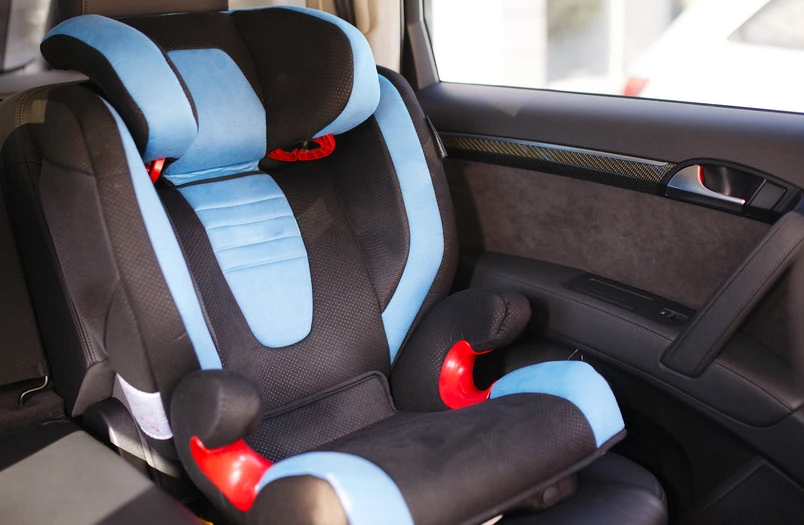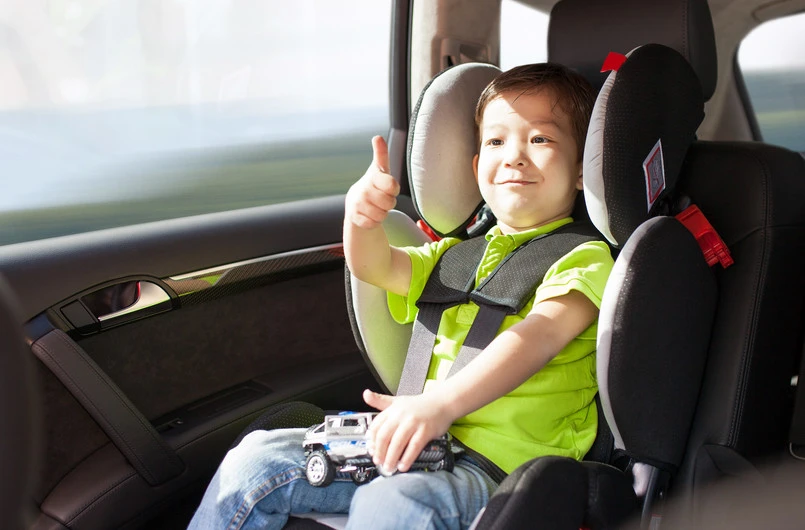Blog


When Is It Right To Switch To A Forward-Facing Car Seat
The right time to switch to a forward-facing car seat is not age-related. Rather, it is when a child has exceeded the weight and height requirement of their rear-facing car seat, which sometimes can be when they are 3 – 4 years.
For parents who want a child to ride along in a car, the primary concern is safety.
Rear-facing car seats have proved to be safer in protecting children in the event of crashes. So, baby’s car seats should be installed rear-facing.
This leaves the question of when to switch to a forward-facing car seat.
This article will answer this question and more.
Sommaire
What is a forward-facing car seat?
A forward-facing car seat is a baby’s car seat that is installed so that the baby sits facing forward just like the driver and the front-seat passenger.
Note that a baby forward-facing car seat does not mean a baby sitting forward in the car seat (beside the driver).
The best place to install a baby car seat (rear-facing or forward-facing) is the back seat of the vehicle.
When is it time to switch to a forward-facing car seat?
The recommendation is to keep your children rear-facing for as long as possible. Switch to a forward-facing car seat only when the child is at least 2 years old and has outgrown the weight and height requirement of the baby car seat.
This is the AAP (American Academy of Pediatrics) guideline.
The key phrase is “keeping children rear-facing as long as possible.” But how long is “as long as possible”?
To determine the right time to switch to forward-facing, consider the two other important phrases in the AAP guideline.
- When the child is at least 2 years old
- When the child has outgrown the height and weight requirement of the rear-facing car seat
1. Switch only when the child is at least 2 years
Two years is the absolute minimum for switching your baby to a forward-facing car seat.
But it doesn’t mean that you should immediately switch once the child is 2 years old.
AAP recommended keeping children rear-facing until they are at least 2 years. Many parents took “2 years” as the standard, and would immediately switch their children to forward-facing car seats once they were 2 years old.
However, in a crash, the baby forward-facing car seats do not adequately protect most 2-year-olds.
For this reason, AAP has revised its guidelines to eliminate the 2 years age limit, while the NTSHA guideline does not include the “2 years” age-based recommendation.
2. Switch only when the baby outgrows the weight and height requirement of the car seat
Do not switch to a forward-facing car seat if the child has not exceeded the height and weight requirement of the rear-facing car seat – even if they’re older than two years.
The weight and height requirements of rear-facing car seats are 22 – 35 lbs and 26 – 36 inches.
However, the average weight and height of 2-year-olds are:
- Weight – 27.5 lbs for boys and 26.5 lbs for girls
- Height – 34.2 inches for boys and 33.5 inches for girls.
So, many children older than 2 years remain within the weight and height requirement of rear-facing car seats.
What if your child exceeds the rear-facing seat’s weight and height requirement but is not up to 2 years old
Switching to a forward-facing car seat before 2 years old is not advised even if the child has already outgrown the weight and height requirement of their rear-facing car seat.
In this scenario, the recommendation is to use a convertible car seat rear-facing.
Convertible car seats can be used both rear-facing and forward-facing. So, they allow you to switch your child from rear-facing to forward-facing without investing in another car seat.
Interestingly, convertible car seats have higher weight and height limits for rear-facing.
Convertibles have rear-facing car seat weight requirements of up to 50 lbs and forward-facing car seat weight requirements of up to 65 lbs.
Why is it not recommended to be in a rush when switching to a forward-facing car seat?
Rear-facing car seats offer the still-developing neck and spine of toddlers better protection. You shouldn’t rush to switch to forward-facing car seats because, for most children, it takes up to 5 years for these to be fully developed.
Consider the following:
- The neck vertebrae of infants and toddlers are cartilaginous and slowly convert to bones over time
- In a crash, the head of a child in a forward-facing seat is flung forward violently, and that can overstretch their soft cartilaginous vertebrae, rupture the spinal cord, and cause paralysis or death.
- The rear-facing car seats prevent violent movement in crashes, thereby offering better protection for a child’s neck, spine, and head.
- In most children, the neck vertebrae do not fully develop until they are 5 years old


